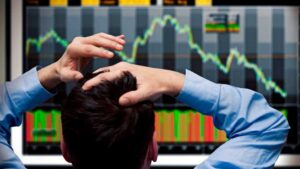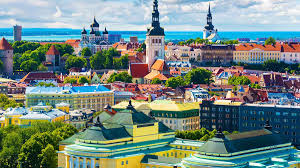
The rise in energy prices as a result of the conflict in the Middle East could weaken economic growth in the eurozone and thus smooth out inflation, said Luis de Guindos, deputy head of the European Central Bank (ECB).
“The emergence of the Iranian-Israeli conflict adds some uncertainty to the dynamics of oil prices,” The Wall Street Journal quoted him as saying. It is therefore important to keep a close eye on developments in the real economy as an indicator of inflation prospects.”
According to de Guindos, the increase in duties on European exports to the United States will certainly slow down inflation in the currency bloc, including because it will weaken economic growth.
“Higher duties are expected even if bilateral negotiations are successful,” the deputy head said. The ECB cut its key policy rate in June and made it clear that it was nearing the end of its monetary easing cycle. In May, inflation in the euro area was below the 2% target.
However, de Guindos’ comments suggest that the rate may have to be cut further to keep inflation around 2%, the WSJ writes.
Source: http://relocation.com.ua/rising-energy-prices-could-weaken-economic-growth-in-europe/

The Estonian Ministry of Finance expects zero growth of the country’s economy at the end of the current year.
According to the forecast published by the Ministry, the reduction in external demand in the second half of last year was stronger than expected, and the expected turn to economic recovery did not take place. This will have the consequence of the lack of growth in the current year.
The Ministry of Economy notes that last year, the exchange of goods contracted globally, driven by the cooling of the Chinese economy and geopolitical tensions. In developed countries and Europe, this was compounded by the rapid rise in interest rates, which was launched to curb inflation, and the deterioration in capital- and energy-intensive activities due to the energy crisis.
Nevertheless, according to the Ministry’s assessment, the factors restraining the development of the Estonian economy have been receding in recent years: price growth has slowed down, wage growth has continued, interest rates have gradually decreased, and there is no high unemployment.
The Estonian Ministry of Finance prepares a financial and economic forecast twice a year, in spring and summer.
Estonia’s GDP in 2023 has decreased by 3.1%. At the end of March 2024, the Bank of Estonia gave a forecast that the country’s GDP decline would slow down to “minus” 0.6% this year and the economy would grow by 3.2% in 2025.
Earlier Experts Club think tank and Maxim Urakin released a video analysis of how the GDP of the world’s largest economies has changed over the past decades, more video analysis is available here –
https://youtu.be/w5fF_GYyrIc?si=BsZmIUERHSBJrO_3
Subscribe to Experts Club YouTube channel here – https://www.youtube.com/@ExpertsClub
ECONOMIC GROWTH, ESTONIA, EXPERTS CLUB, GDP, MACROECONOMICS, MINISTRY OF FINANCE, URAKIN

Ukrainian President Volodymyr Zelensky is confident that “Transcarpathia will be one of the drivers of economic and social growth”.
He wrote this in his Telegram channel following a coordination meeting on the security and social situation in Transcarpathia held in Uzhgorod on Wednesday.
“Strategic for the region border issues. Relocation of business and the creation of new jobs in different communities of the region is an important area of work. Facilities for the rehabilitation of our warriors are the right projects. A lot of initiatives to develop the economy of Transcarpathia – those opportunities that have not been used for decades,” – emphasized the head of state.
“Transcarpathia will be one of the drivers of economic and social growth. Thank you to everyone in Transcarpathia, who works for the good of Ukraine and helps to bring our victory closer,” – wrote Zelensky.

The World Bank has raised its projection for Ukraine’s gross domestic product (GDP) growth in 2021 to 3.8%, while early January it estimated the prospects for recovery at 3%.
According to the World Bank’s Europe and Central Asia Economic Update, Spring 2021: Data, Digitalization, and Governance, the forecast for GDP growth in 2022 has been worsened to 3%, compared to 3.1% in January.
The World Bank said that only a partial recovery in GDP growth of 3.8% is expected in 2021, given high uncertainty regarding the rollout of the vaccine and the slow pace of structural reforms to address bottlenecks to investment and to safeguard macroeconomic sustainability. The GDP growth projection of 3.8% is also underpinned by positive base effects in agriculture and processing industry, the World Bank said.
In addition, the World Bank expects inflation this and next year at 5%, in 2023 – 5.8%.
The current account deficit in 2021 will be 1.3%, in the next two years – 2.8% and 3.3%, respectively, World Bank analysts predict.
The net inflow of foreign direct investment in 2021 should increase by 2.4%, the next year – by 2.6%, and in 2023 it is expected the growth to triple and amount to 6.2%.
At the same time, the World Bank predicts a reduction in public debt in relation to GDP from 63.2% in 2020 to 62.4% in 2021, as well as 59.7% and 57.8% in the next two years.
According to the bank’s expectations, after a 7.4% decline in 2020, Ukrainian exports will grow by 3.4% this year, and by 2% and 4.4% in 2022 and 2023, respectively. As for imports, after a decline of 11.5% last year, this indicator is projected to grow by 6.8% this year, 5% in 2022 and 4.8% in 2023.
As reported by the State Statistics Service, Ukraine’s real gross domestic product in 2020 fell by 4% after four years of growth.

The Cabinet of Ministers of Ukraine expects the resumption of economic growth from the third quarter of 2020, Prime Minister Denys Shmyhal has said.
“We have macro forecasts of the Ukrainian economy from the Ministry of Economy, the IMF, the World Bank. All of these macro forecasts are converging. We expect the growth of the Ukrainian economy from the third quarter. Naturally, the second quarter failed due to quarantine,” the prime minister said during a press conference in Kyiv.
He called the economic situation complicated, however, according to him, the government does not expect surprises that will provoke a breakdown of the economy.

The economic growth of Ukraine in 2020 will be 3%, according to the basic macroeconomic forecast prepared by the analytical department of Alfa-Bank (Kyiv).
“We expect Ukraine’s economy to maintain moderate rate of growth in 2020, adding another 3% after 3.3% in 2019. This would be the fifth year of economic recovery in a row (only in the 2000s, Ukraine did enjoy a longer growth period),” according to the forecast posted on the bank’s website.
“Growing consumer demand should be the major driver for the economy next year. We also expect further expansion in investment, supported by maintained macro-financial stability and declining interest rates. However, economic growth would be limited by global economic cool down, some worsening in terms of trade (that is, the ratio of prices for key exports and imports), limited foreign direct investment, cutbacks in margins of some big sectors, and tighter labor market with regard to demographic challenges,” it says.
“Macro-financial stability, coupled with tight monetary policy, low imported inflation, and limited current needs in upward reviews of administratively regulated prices would facilitate further slowdown in inflation. However, strong growth in wages and consumer demand would exert some upside pressure on prices. We expect the growth in the Consumer Price Index (CPI) to slow down from current 7.5% to 6.3% at the end of 2020,” according to the document.
The bank said the foreign exchange market will remain stable: the average annual hryvnia to U.S. dollar exchange rate is to be close to the indicators of 2017-2019. The average annual hryvnia exchange rate in 2020 will be UAH 26.65/$1, the bankers stated.
“Economic growth, maintained macro-financial stability, moderate fiscal deficit and declining interest rates would ease the debt burden for the state. According to our estimates, the public debt to GDP ratio will go down from 60.9% in 2018 to 52.7% in 2020,” the bank said.